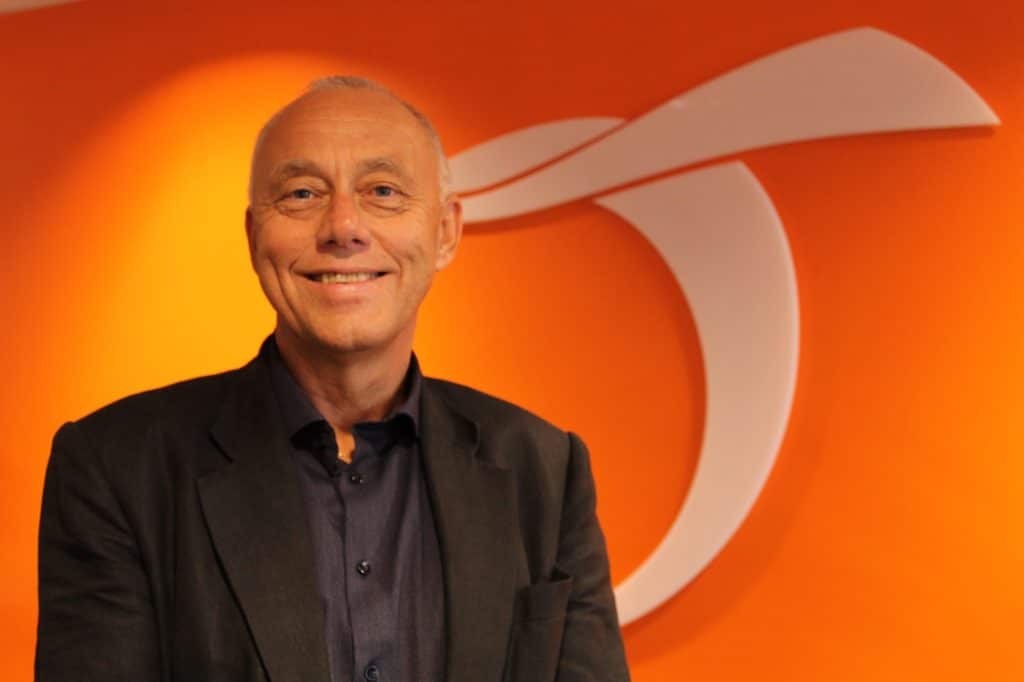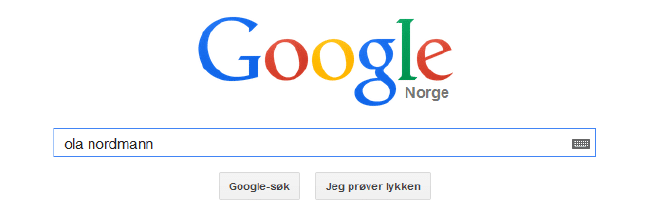There is nothing more important for a manager’s personal success than hiring top employees. In a time of increasing unemployment it is a paradox that it will become even more difficult to attract the best. People become more security seekers than normally.
How do businesses recruit?

Trond Larsen, Talent Gallery, has worked with headhunting for more than 21 years and shares some of his experiences.
There are many ways companies recruit. Not just through recruiting agencies, but also on their own, through advertising, networks, own employees and friends. Here are the most common forms of recruiting internationally.
Recruiting Medium
- Own website
- Own employees
- In-House recruiters
- Job Boards
- Search companies
- Recruiting agencies
- Advertising in newspapers, publications and web
- Recruitment through universities and colleges
- Social networks
- CV data bases
5 generations in the work force
Eventually as the Baby Boomers generation retires from an active work life, we will experience a gap between vacancies and potential, qualified candidates.
It has long been predicted that it will be more open positions than candidates the coming years within certain roles in the society. Both in the private and public sector. The estimates vary, but experts agree that it will be between 3 and 10 million more workplaces than people by 2020. These are alarming statistics, and we are already experiencing that we are facing shortages within certain disciplines.
If you have worked with recruiting within the health sector or engineering, you know what we are talking about.
The consequence of the candidate shortage
- The time you will spend on hiring critical positions can increase from 1 month to 6 months, a year or more.
- The companies lowers their candidate requirements to get positions filled
- The salary levels increase. What is high income for certain disciplines today will be medium level the coming years. Expertise shortage will be widespread.
 There is a significant difference between values and attitudes between the different generations
There is a significant difference between values and attitudes between the different generations
The candidates
The candidates have their own ways of getting insights of the job market. In today’s computer based world it is important for companies/institutions to have a conscious relationship to the web-based world we all live in.
It is worth noticing the following:
- 84% of the candidates will look at the company’s website before an interview
- 54% of the candidates will review the company through social networks and professional networks
- 53% of the candidates will check news about the company/institution online.
The best candidates will always do thorough research of a future employer early on in the process.
One should also take note of the following:
- 54% of the candidates use social and professional networks to look for new jobs
- 83% of recruiting advisors seeks candidates based on online profiles
Food for thought
It can be easy to focus on the “get the job” characteristics
When you identify the ideal profile one should start describing the actual job – not the person who will do the job.
To get a job offer includes elements like:
- Personality
- First impression
- Handshake
- Social safety
- Performance
- Extroversion
- Verbal communication skills
To do a good job includes factors like:
- Drive
- Team working skills
- Ability to reach a goal
- Technical skills
- Leadership skills
- Ability to plan
- Intelligence
One can easily hire people who are doing well at interviews, but weak in execution over people who are weak during interviews, but strong at the disciplinary side. Wait 30 minutes before you make an opinion about the candidate!
- There is nothing more important for a manager’s personal success than hiring top employees
- Management is easy when you know exactly what needs to be done in a job and you hire the right people to do exactly this
- Focus on the candidate’s ability to do the job – not get the job
- The best candidates do not look at a job based on their own skills; they look after what they want to work with and learn in a new job. And they want varied tasks.
4 types of candidates
There are at least 4 types of candidates who all get motivated by different things. This must be taken into consideration when designing a job advertisment and the presentation in an interview.
Active candidates
Restless, does everything to get a new job. If you attract one of the many restless employees, you know that your job advertisement is working. But it is difficult to find the best in this group.
Partly Active candidates
Unhappy candidates who want something better. They look sporadically for new jobs, usually when it gets difficult in their current job. It is interesting candidates within this segment.
Partly Passive candidates
They are top candidates with good jobs, but can for example feel pressure and insecurity due to downsizing of organisations. They look sporadically, but silently hope for a headhunter to approach them and present new opportunities. These contacts can be reached by active networking.
Passive candidates
People with good jobs, who has to be persuaded into seeking new opportunities. The costs of reaching these people through advertising can easily become high. These must usually be headhunted.
Partly Active and Passive candidates should be treated the same way as you want to be treated yourself. With respect, understanding and relationship building.
All candidates should without a doubt be treated with respect – they can later become one of your customers.
- Describe the possibilties and make sure 75% of the job description addresses the opportunities
- Make sure to be available if the candidates attempts to contact you
Use of external consultants
What can external resources offer?
In a recruiting process there are some main reasons for needing help:
- Lack of Capacity
- Shottage of candidates
It can be an option to seek help within parts of the process
- Application processing
- Selection, including review of the internal candidates
- Profile testing
- Reference checks
- Search for candidates
Talent Gallery and our NPAworldwide partners offers flexible solutions for our global customers
There are certain areas it is more applicable to use search/headhunting services than others:
- Niche markets where demand for candidates exceeds supply
- Markets where the key players are hard to find and rarely responds to advertisement
- Where your company has an immediate need
- Where you do not find the right candidates
- Markets where the headhunter can do something the client can not do: Headhunt candidates. All headhunters in Talent Gallery have comprehensive training in search and headhunting techniques based on the company’s 20+ years in the industry
- The best candidates are often already in a good job, they perform well and are well-paid. The only way to reach these people is through direct contact: Headhunting.
Communication with candidates
Be prepared for immediate phone enquiries after the advertisement is posted. Unfortunately, these are mostly from recruitment consultants or media sales people – Few candidates…
The easiest way to avoid this is to outsource this part of the recruitment process.
Make sure the advertisment is published at a time where you are present – not on a vacation or business trip.
When a candidate calls they will often ask questions like:
- Can you tell me more about the job?
- Are there many applicants?
Do not spend too much time on these conversations. A positive way to respond can be:
- I will rather tell you more about this opportunitiy later, but tell me: What is your background?
Based on the answer you can quickly determine whether this is an interesting candidate for this or other positions. If not, tell them in a polite way that “right now we are looking for another profile” or something similar. But remember: Thank them polite for their interest.
The interview process
We experience that the client is poorly prepared in relation to their own presentation. A recruiting interview is also a sales effort if you want to attract the candidates.
In a 45 minutes interview, the first 10 to 15 minutes should be devoted to presenting the company, the products and the organisation in a professional way.
What you should look for in CV’s
- Foreign origin – what about working rights?
- Quick job change, e.g. less than 18 months in a job or 3 jobs or more in 5 years
- No contact information or address
- Lower education than the norm
- Consultant. How did they work? How was their turnover?
- Unemployed – why?
It can also be smart to research the candidates via Google before meeting them. Or social media like LinkedIn. How active are they? In what social networks are they present?
Location for interviews
If there are critical positions and the candidates will feel uncomfortable undertaking the interviews on the company’s own premises, one should consider having the interviews in a netural location. Not all candidates want their interest to go public at this early stage, especially if they are coming from a competitor. Also, your own employees will be very curious finding out who the applicants are.
Agenda for a candidate meeting
- Introduce yourself and your background
- Let the candidate relax – perhaps some beverages?
- Tell the candidate the duration of the interview
- Explain how the interview will be laid out
- Say that you will take notes to secure a justified evaluation later
- Ask if they understood everything
- Ask if they are ready to start
- Start by asking what they know about the company
- Spend 10 – 15 minutes telling about the company, including products/services/environment
- Let the candidate take the lead and tell about him/herself
Number of participant – own company
An interview should not be a power demonstration and it should at least not be more than 3 participants from the company side.
Types of interviews
There are roughly three types of interviews
- Biographical interview – review of CV
- Interview looking backwards, based on history being the best parameter of future success
- Interview looking forward – what the candidate can be
Evaluation form
Everyone who participates in the interviews should immediately after each interview do an evaluation of the candidate they just met. This can for example be done through a simple evalution form. An example:
Example of evaluation form
Feedback
After meeting 5 – 10 candidates you will now have a list of people for your next meeting. Most likely 2 to 3 people. The outstanding candidates should get a friendly feedback including a thank you for an interesting meeting, explaining that their background was not 100% right for this position. Ask at the same time for permission to contact them at a later time, when other opportunities arise. No bridges have been burnt!
- Do not send any rejections on Fridays, no reason to ruin someone’s weekend, is it?
- Let the candidates leave the process with a positive experience!
Profile testing
You should now plan next phase, where you will attempt finding the most suitable out of 2 to 3 candidates. At this time, it can be smart to run a profile test.
- There are a lot of profile tests on the market, they can be bought from external suppliers
- Some HR departments have their own tests
- The tests are usually run online and lasts from 15 to 20 minutes
- The purpose of profile testing of the candidates is to map their personal characteristics in a work setting
- The profile test should not be the only factor in the process and must be followed up with an interview where the candidate can clarify why he/she answered the questions as seen in the test results.
Important interview questions
- Out of everything you have achieved so far in your career; what stands out as the most important?
- Can you tell me a little about what happened?
Top candidate – or…
A Top Co-worker is concerned with getting the job done, while a Top Candidate is concerned with getting the job
Three parameters to estimate job success
- Competency
- Motivation
- Team skills
Avoid these mistakes

You should avoid these mistakes in the recruiting process:
- Do not say there are limited career opportunities in the job. If that is the case, things can still change…
- Do not show up unprepared to an interview
- Do not sell inn opportunities too quickly
- Do not mention salary too early – or too late
- Do not bring up ethnic or personal issues like religion, children/pregnancy etc.
- Do not make the candidate embarrassed
- Do not wait until the end of the interview to discuss offers
- Do not forget asking if the candidate has other ongoing processes
5 factors for job change
The Job Match
Short term challenges and long term opportunities
The Manager’s qualities
The best talents look after better leaders who can be mentors and help them achieve a quick competence growth
The team quality
The best wish to cooperate with like-minded
The quality of the company
The company does not have to be the market leader, however they must have potential and an improvement plan.
Salary package
As long as the compensation is in the highest third and the job offers an actual opportunity, salary will not be a main topic

Good Luck!
…but if you still need help…
Talent Gallery are members of NPAworldwide – a global network with more than 500 executive search companies. We offer amongst other:
- Executive Search
- Selection
- Management for Hire
- International Recruiting
- In-House training
Our experts
Anne Verdich, Mobile +47 4677 2020, e-mail anne@talent-gallery.no Transportation and Logistics
Leif Stråtveit, Mobile +47 9580 8001 e-mail leif@talent-gallery.no FMCG, Retail
Reidun Pedersen Ringel, Mobile +47 9205 0437 e-mail reidun@talent-gallery.no IT
Roar H. Olsen, Mobile +47 9130 2225 e-mail: rho@rhoconsult.no Manufacturing, Packaging, Engineering
Sondre Larsen, Mobile +47 9340 5195 e-mail sondre@talent-gallery.no Construction
Susanne Rugtvedt Larsen, Mobile +47 9747 8193 e-mail susanne@talent-gallery.no Marketing
Tom Augestad, Mobile +47 4803 4452 e-mail tom@talent-gallery.no Energy
Trond Larsen, Mobile +47 9130 2220 e-mail tl@talent-gallery.no Executive, International Search, Sales & Marketing














